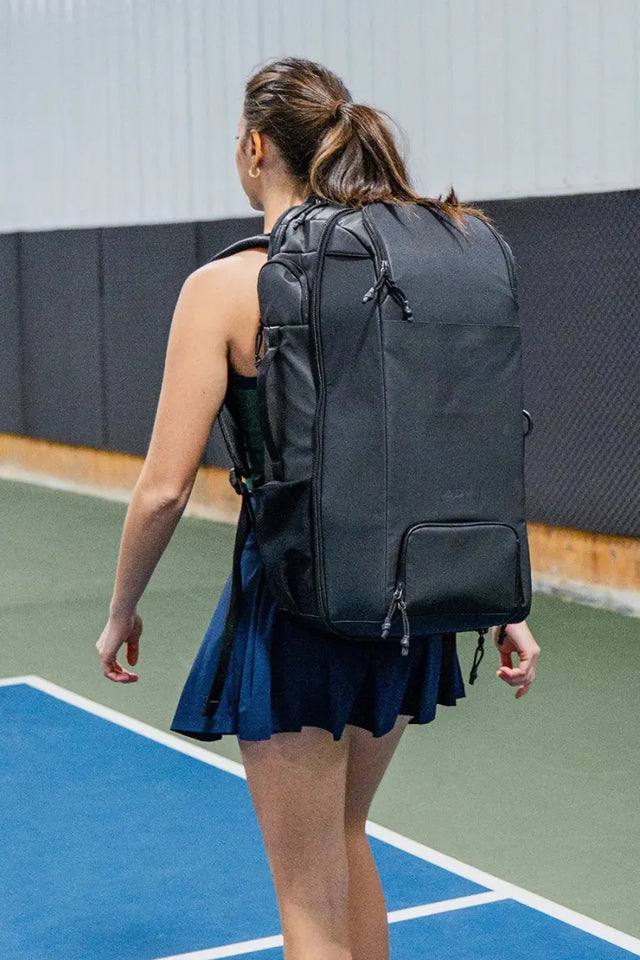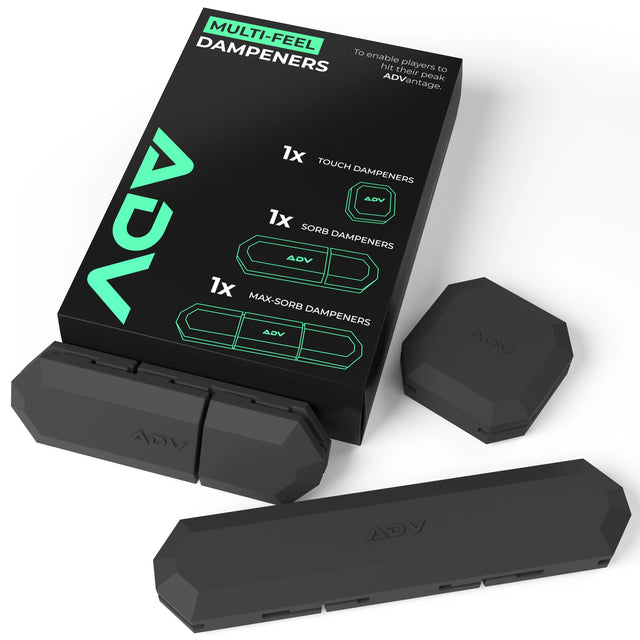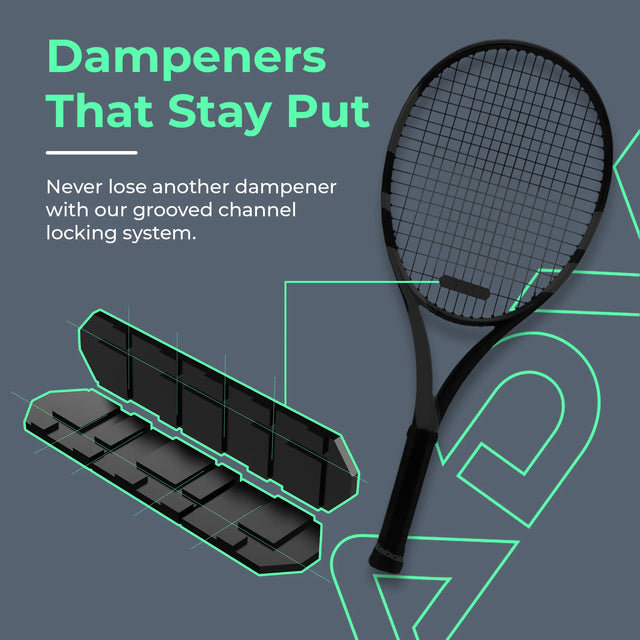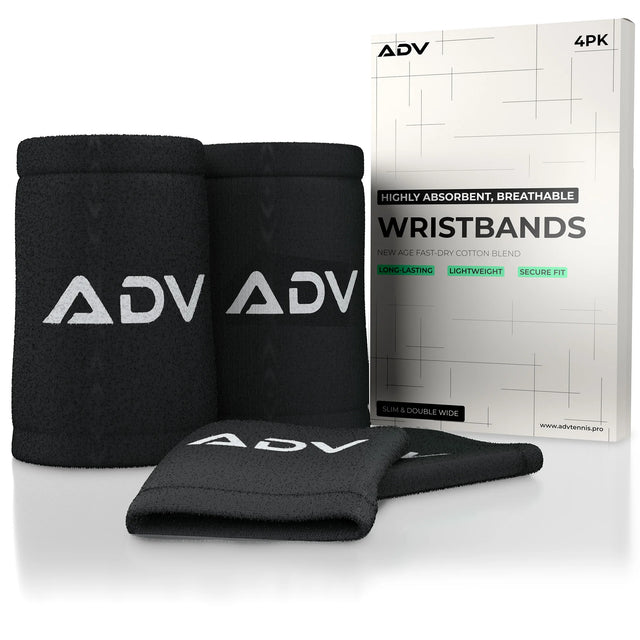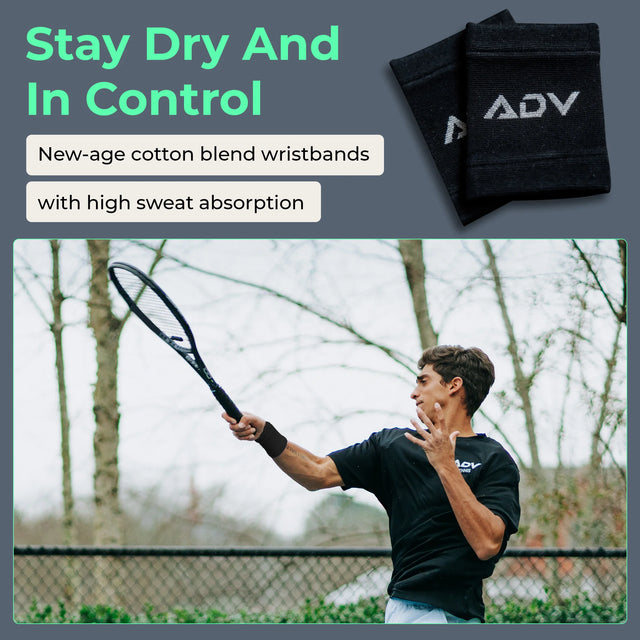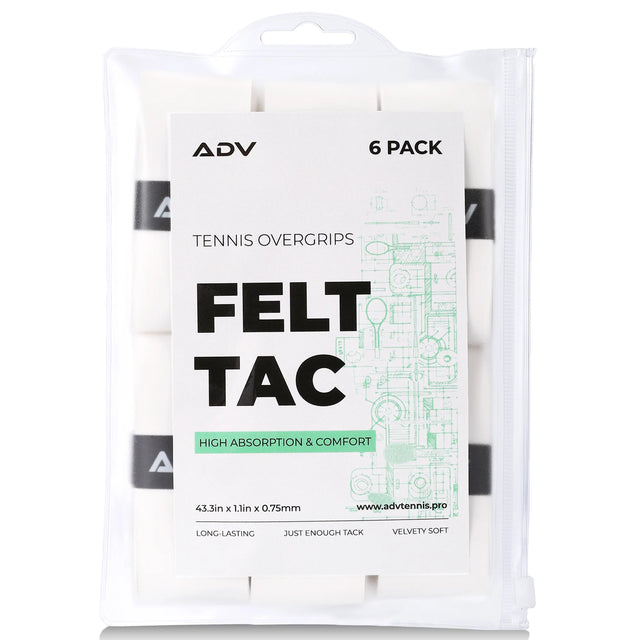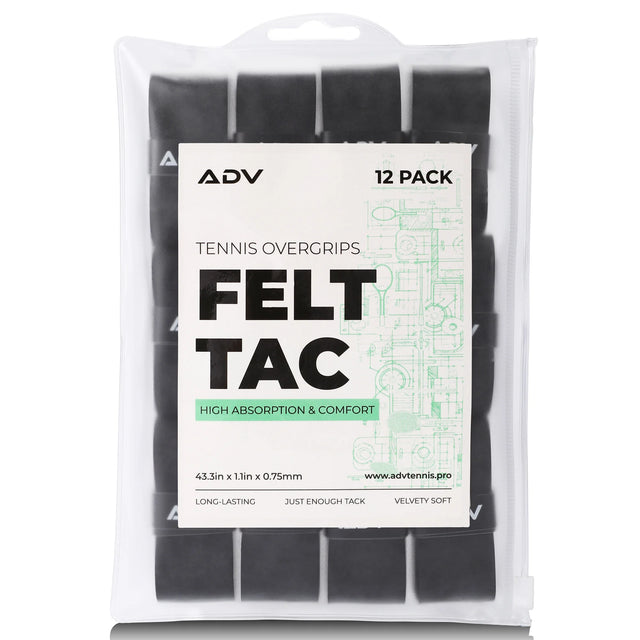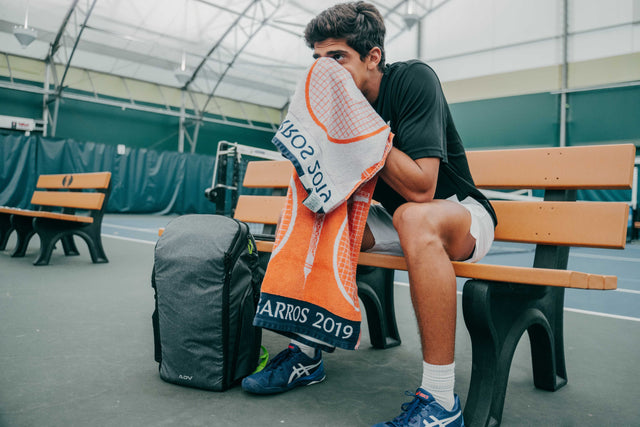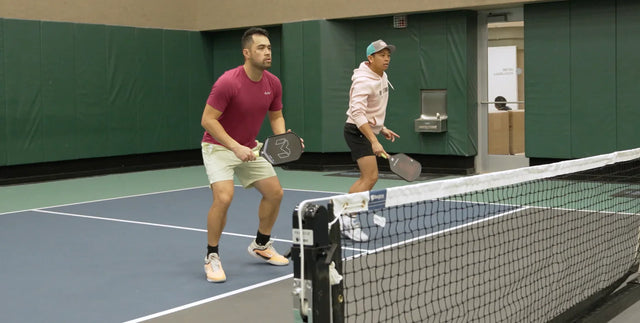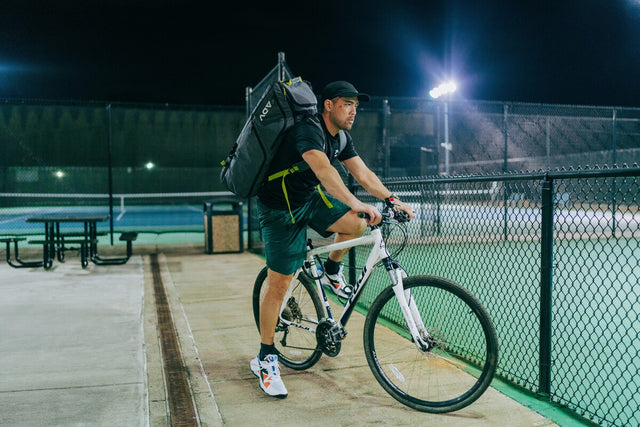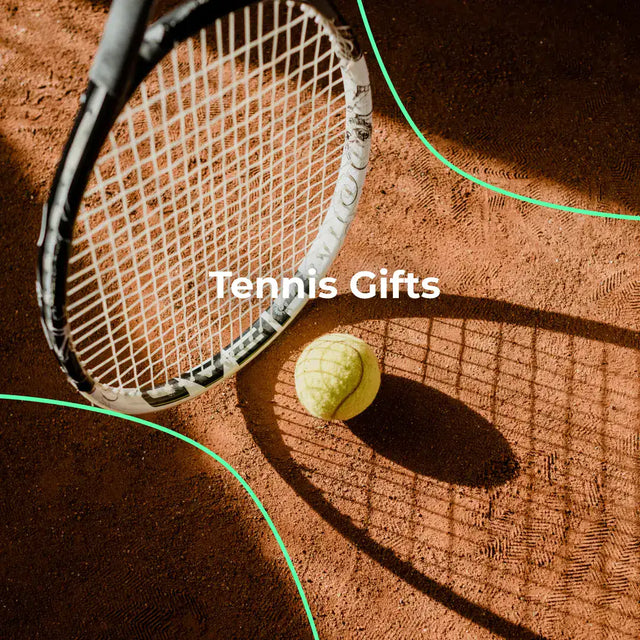Tennis Backpacks: Functionality, Style, and Your Best Game
Tennis backpacks have quickly emerged as a must-have accessory for players of all levels, combining functionality, style, and durability in one sleek package. As the sport's popularity grows, so does the need for specialized gear that protects your valuable equipment and makes a statement on and off the court. Unlike regular backpacks, these are designed with unique compartments and thoughtful features that cater specifically to the demands of tennis players. This blog post delves into its distinctive qualities, examining what sets them apart and offering insights into how the right bag can enhance your game-day experience.
What Makes Tennis Backpacks Unique
Specialized Compartments for Rackets and Equipment
One of the standout features of tennis backpacks is the inclusion of dedicated rackets and gear compartments. These compartments are designed to hold racquets securely in an upright position, which minimizes the risk of damage from impacts during transport. Also, it often features separate sections or sleeves designed for tennis balls, shoes, and accessories. This thoughtful organization means your equipment is not jumbled together, allowing you to locate and retrieve items before or during matches quickly. The compartmentalization also helps maintain the integrity of your gear by reducing friction and pressure that could otherwise lead to premature wear or damage.
Padded Protection for Tennis Gear
The padded interiors and reinforced sections are engineered to cushion your racquets and other delicate equipment against shocks and bumps that might occur while commuting to the court. This level of protection is critical for players who invest in high-quality, often expensive gear, ensuring that their equipment remains in peak condition despite frequent use. Padded shoulder straps and back panels also add an extra layer of comfort, allowing for extended carrying without compromising on protection or style.

Design Elements Tailored for Tennis Players
Beyond functionality, the aesthetic design is specifically tailored for the sport. These backpacks incorporate modern, sporty designs that resonate with the active lifestyle of tennis enthusiasts. Ergonomic features such as adjustable straps and breathable mesh panels ensure that the bag is comfortable to carry during long days on the court. Moreover, many offer customizable options, including color choices and personalization elements, enabling players to express their individuality. By blending advanced storage solutions with style and comfort, tennis backpacks provide a practical yet fashionable way to transport your tennis gear, making them a preferred choice for casual players and seasoned professionals.
Comparing Different Tennis Bag Styles
Tennis Backpacks vs. Tennis Racquet Bags
Tennis backpacks are designed to combine functionality with everyday convenience. They usually feature padded racket compartments, additional pockets for accessories, and versatile designs that allow you to transition seamlessly from the court to casual settings. In contrast, tennis racquet bags typically maximize equipment storage capacity. They are often preferred by players who need to carry multiple racquets and more gear for tournaments or professional play.
The Advantages of Tennis Sling Bags
Tennis sling bags offer a lightweight and streamlined option for those who prefer minimalism. Their single-strap design provides quick access to your gear while ensuring the bag remains compact and easy to carry. Ideal for casual play or practice sessions, tennis sling bags deliver convenience and style without the bulk of larger bags. This makes them popular among players who want to keep their essentials close at hand and enjoy a modern, sleek look on the court.
The Role of a 3-Racket Tennis Bag in Your Gear
For players who don’t need to carry an extensive collection of equipment, a 3-racket tennis bag is an excellent solution. These bags are specifically designed for those who typically use one or two racquets per match, offering just the right amount of space for additional items like balls, grips, and small accessories. Their compact size makes them easy to transport and perfect for practice sessions while still providing sufficient protection for your equipment with dedicated, padded compartments.
Multi-Use Options for On and Off Court
Some tennis bags are engineered with versatility in mind, designed to function both on and off the court. These multi-use options can be adapted for everyday activities such as work or travel, thanks to features like adjustable straps, convertible designs, and extra storage compartments for personal items. Versatile bags often incorporate stylish aesthetics and practical features, making them a favorite for players who value performance and fashion. By choosing a bag that can serve multiple roles, you streamline your gear and ensure that your investment works for you in various aspects of your life.
How to Pack a Tennis Backpack Efficiently
Tips for Tennis Storage
List all your equipment—racquets, tennis balls, shoes, clothing, and accessories—and group them by type. This preliminary step saves time and ensures that each item finds its designated place, reducing the risk of damage during transport. Prioritize delicate items like racquets by ensuring they have their padded compartments. Consider using small pouches or packing cubes for smaller accessories such as grips, strings, and personal items. The key is to create a systematic approach that balances accessibility with protection so you can quickly retrieve what you need on the court without rummaging through a jumbled mess.
Step-by-Step Guide to Packing Your Bag
Once you’ve organized your gear, follow this step-by-step process to pack your tennis backpack efficiently:
-
Start With The Base: The foundation of an efficient backpack setup begins by establishing a strong base. Begin by designating the bottom compartment as the cornerstone of your pack, where the heavier items, such as shoes, water bottles, or any robust training equipment, are carefully placed. This step is crucial because it creates a stable platform, ensuring that the weight of your items is distributed evenly across the bag’s base, which protects the contents and enhances the bag’s overall balance. By placing your bulkier, more weighty gear at the bottom, you reduce the risk of items shifting or colliding with one another during transit. A solid base minimizes the potential for damage to sensitive items like racquets or electronics, especially when the bag is subjected to the rigors of travel. It also sets the tone for a systematic organization, as subsequent items can be layered on top in a manner that respects their relative fragility. Consider the arrangement of your shoes; by aligning them neatly in a way that they interlock with the shape of the compartment, you ensure they don’t roll or knock against other contents. The organization of this first layer plays a pivotal role in overall efficiency, as it allows for easier access to essential items without having to sift through a jumbled mess. Experiment with different configurations until you find a layout that combines security with ease of retrieval. When properly managed, the base reinforces the bag’s structural integrity and simplifies the subsequent steps of packing, contributing to a smoother and more effective preparation routine before your match or practice.
-
Secure The Racquets: The next step involves dedicating specific space for your tennis racquets, ensuring they remain protected from potential impacts. Placing these delicate yet essential tools into the specially designed, padded upright compartments is not just about convenience—it is about preserving the integrity of your equipment. Begin by examining your backpack for any features tailored for racquet storage, such as adjustable straps or molded compartments that securely cradle the racquet frame. The padding in these sections is strategically placed to absorb shocks, reducing the likelihood of damage during sudden movements or bumps. When inserting your racquets, ensure they are correctly aligned with the compartment’s contours so that no portion of the frame is left unsupported or vulnerable. This deliberate arrangement safeguards the racquets from external pressure and prevents them from rubbing against other items that could scratch or dent their surface. Think of this process as an opportunity to inspect your racquets for any pre-existing issues—small dents or worn-out grips can be addressed before the racquet is tucked away. By methodically securing the racquets, you are investing in the longevity and performance of your key sporting instruments. Once placed, you can also consider using additional internal dividers or protective sleeves for extra cushioning if your bag lacks dedicated racquet compartments.
-
Layer Smaller Items: Once the foundational items are securely in place, the next step involves carefully layering the smaller yet essential items that accompany your game day routine. This phase is as much about efficiency as it is about maximizing space, where every gap is transformed into an opportunity for organization. Start by identifying the smaller accessories such as tennis balls, sweatbands, wristbands, and other personal items, and then allocate them to the various pockets, pouches, or compartments designed specifically for these objects. The strategy here is to fill the voids that remain after placing the larger items, preventing unnecessary movement within the bag during transport. By strategically inserting these more minor elements, you ensure that each item is both easily accessible and securely housed, eliminating the possibility of losing track of critical gear in the depths of your backpack. Consider using elastic bands or small dividers, if available, to further compartmentalize and secure these items. This method not only preserves the integrity of your accessories but also promotes a streamlined packing process. No matter how minor it may seem, each item plays a vital role in your game day setup—whether it is a spare grip, a packet of extra strings, or even a snack.
-
Utilize Insulated Compartments: Many modern tennis gear bags come equipped with insulated compartments that serve a dual purpose: maintaining the temperature of your beverages and preserving the freshness of your snacks. This step involves identifying and strategically using these specially designed sections to enhance your game day experience. The insulation technology in these compartments works by keeping hot items warm and cold items chilled, which is especially beneficial for maintaining the ideal temperature of water bottles, electrolyte drinks, or energy snacks during extended practices or matches. Begin by selecting items sensitive to temperature fluctuations, such as sports drinks or even perishable food items, and place them carefully into the insulated pocket. The benefit of this arrangement is twofold: it not only protects your consumables from the ambient temperature but also ensures that you have access to refreshing, temperature-controlled nourishment when you need it most. This careful placement can significantly contribute to your overall energy levels and hydration throughout the day. Using insulated compartments prevents spills and condensation from affecting other items in your bag. These compartments often feature secure zippers or flaps that create a sealed environment, further enhancing the insulation effect. It is also helpful to pre-chill or warm your beverage before packing it, depending on your preference and the expected weather conditions.
-
Check For Balance: This process involves a careful review of the placement of all items, ensuring that weight is evenly distributed throughout the backpack. An imbalanced load can lead to unnecessary strain on your shoulders and back, negatively affecting your posture and causing discomfort during long commutes or intense matches. Start by lifting your bag and gently shifting it from one side to the other, paying close attention to how the weight settles. Look for any pockets or compartments that may have been overloaded, as well as any gaps where items might shift and cause the load to become uneven. Adjusting gear placement might involve repositioning smaller items or even redistributing larger objects to create a more harmonious balance. The goal is to establish a configuration where the bag feels stable and secure against your body, minimizing the risk of sudden movements or misalignments that could disrupt your game. In addition, a balanced bag contributes to the longevity of the backpack by reducing wear and tear on its structure. A well-balanced load makes the bag easier to carry and provides reassurance that your equipment is well-protected against external impacts. Taking the time to verify and adjust the distribution of weight ensures that every item is where it should be, reinforcing the integrity of your organization's system.
By following these steps, you maximize space without overloading your bag and ensure that all your tennis equipment remains accessible and well-protected throughout your match.
Design and Aesthetics
Modern Trends in Tennis Backpack Styles
Lightweight materials, water-resistant fabrics, and design innovations such as adjustable straps and vented back panels for improved airflow are common. These elements combine to create a product that is as stylish as it is practical, making it easier for players to transition from the court to everyday life without missing a beat.
Customization Options and Personalization
Many brands now offer options for personalization, allowing players to choose color schemes, add their initials, or even select unique graphics. This level of customization ensures that each backpack reflects the owner’s style and enhances the overall user experience. Whether you prefer a sleek, understated look or a bold statement piece, a personalized tennis bag for rackets perfectly extends your identity on the court.

Balancing Functionality with Fashion
The best tennis bags strike a perfect balance between functionality and fashion. They are designed to protect and organize your tennis equipment while making a stylish impression. The thoughtful integration of design elements ensures that the bag meets the rigorous demands of the sport, while contemporary aesthetics keep it trendy and adaptable to various lifestyles.
Practical Considerations When Choosing
Matching the Bag to Your Level of Play
Casual players who only bring one or two racquets and minimal accessories may benefit from a streamlined, lightweight backpack that’s versatile enough for everyday use. More competitive or professional players often require bags with larger capacities and specialized compartments to accommodate multiple racquets, shoes, and training gear. Consider how frequently you play, the intensity of your training sessions, and the specific features that would support your performance during matches.
Price Ranges and Value for Money
It is essential to consider the intricate balance between cost and the inherent value that each option offers. A thoughtful approach to comparing different models ensures that you invest in a bag that meets your needs while remaining within budget.
-
Brand and Features Impact Cost: Esteemed brands often invest in advanced research and development, which translates to enhanced durability, sophisticated ergonomics, and additional functionalities such as thermal insulation, specialized compartments, and customizable designs. While pushing the price point higher, these attributes offer users a level of performance and longevity that may justify the investment for serious athletes. Lesser-known brands might focus on delivering basic functionality without the frills, resulting in a lower initial cost. However, the trade-off might come from reduced material quality or a lack of advanced features that could influence overall satisfaction during extended use. Understanding that the cost is often a direct reflection of both the technology embedded in the bag and the brand’s commitment to quality is critical.
-
High-End Vs. Affordable Options: Premium options are typically characterized by the use of superior materials that are engineered to withstand the rigors of frequent travel and intense sporting activities. These high-end bags are often constructed with robust fabrics that resist tears, water, and extreme weather, ensuring the bag remains intact and functional over many seasons. In addition to their durability, premium models usually feature enhanced ergonomic designs that provide excellent support and distribute weight evenly, reducing strain during long matches or travel. On the other hand, affordable options strive to balance functionality with cost-effectiveness. These models might not incorporate every high-tech feature available in luxury bags. Yet, they still deliver adequate protection and organization for casual players or those just beginning to invest in quality gear. Although the materials used may not always match the premium standard, many budget-friendly options offer surprisingly resilient construction and user-friendly designs that cater well to everyday needs.
-
Assess Value for Money: Instead of focusing solely on the upfront cost, potential buyers should examine how well the bag meets the demands of their specific use case and lifestyle. For instance, a bag that integrates multifunctional compartments, advanced insulation for temperature-sensitive items, and ergonomic designs that minimize strain during transport often justifies a higher price tag by delivering lasting performance. It is advisable to compare various models across different price ranges, scrutinizing customer reviews, product specifications, and the warranty or after-sales support offered by the manufacturer. These reviews and feedback can provide valuable insights into the long-term reliability and durability of the bag, highlighting any issues that might not be apparent from a simple product description. Evaluating value for money also involves considering the overall build quality, the type of materials used, and the level of craftsmanship that goes into each unit. Factors such as ease of cleaning, the efficiency of organizational features, and the ability to adapt to different storage needs contribute to the overall satisfaction of the product.
By examining the insights above, you can make an informed decision that aligns with your athletic needs and financial goals.

Investing in a high-quality tennis backpack streamlines your preparation routine and enhances your overall game-day experience. With careful consideration of your individual needs and preferences, you can select a bag that supports your style of play—whether you’re a casual weekend enthusiast or a dedicated competitor. Embrace the opportunity to upgrade your gear and enjoy the benefits of having a dedicated backpack that delivers functionality and fashion, helping you perform at your best every time you step onto the court.

